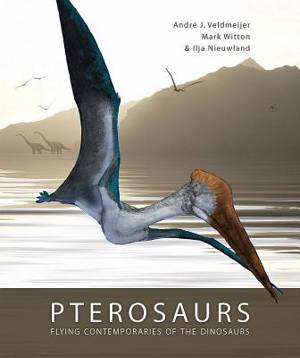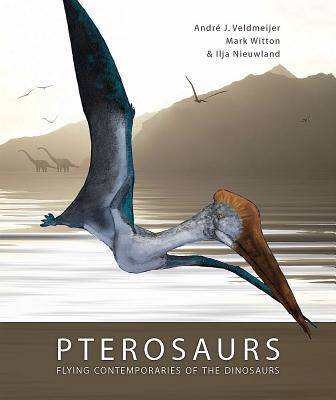
Bedankt voor het vertrouwen het afgelopen jaar! Om jou te bedanken bieden we GRATIS verzending (in België) aan op alles gedurende de hele maand januari.
- Afhalen na 1 uur in een winkel met voorraad
- In januari gratis thuislevering in België
- Ruim aanbod met 7 miljoen producten
Bedankt voor het vertrouwen het afgelopen jaar! Om jou te bedanken bieden we GRATIS verzending (in België) aan op alles gedurende de hele maand januari.
- Afhalen na 1 uur in een winkel met voorraad
- In januari gratis thuislevering in België
- Ruim aanbod met 7 miljoen producten
Zoeken
Pterosaurs
Flying Contemporaries of the Dinosaurs
Andre J Veldmeijer, Mark Witton, Ilja Nieuwland
Paperback | Engels
€ 62,95
+ 125 punten
Omschrijving
Pterosaurs or flying reptiles were the first vertebrates to evolve flight. These distant relatives of modern reptiles and dinosaurs lived from the Late Triassic (over 200 million years ago) to the end of the Cretaceous (about 65 million years ago) a span of some 135 million years. When they became extinct, no relatives survived them and as a result these prehistoric animals cannot readily be compared with our modern-day fauna. So what do we know of these highly succsessful animals? The present summary answers this and many more questions based on the most recent results of modern scientific research.
After a short introduction to palaeontology as a science and its history related to pterosaurs, it explains what pterosaurs were, when and where they lived, and what they looked like. Topics such as disease, injury and reproduction are also discussed. Separated from this text are 'Mark explains' boxes. Each of these explanations puts one specific species in the spotlight and focuses on its lifestyle. They show how diverse pterosaurs were, from small insectivorous animals with a wingspan of nearly 40 centimetres to the biggest flying animals ever to take to the air, with wingspans of over 10 metres and with a way of life comparable to modern-day storks. The text is illustrated with many full colour photographs and beautiful palaeo-art prepared by experts in the field.
After a short introduction to palaeontology as a science and its history related to pterosaurs, it explains what pterosaurs were, when and where they lived, and what they looked like. Topics such as disease, injury and reproduction are also discussed. Separated from this text are 'Mark explains' boxes. Each of these explanations puts one specific species in the spotlight and focuses on its lifestyle. They show how diverse pterosaurs were, from small insectivorous animals with a wingspan of nearly 40 centimetres to the biggest flying animals ever to take to the air, with wingspans of over 10 metres and with a way of life comparable to modern-day storks. The text is illustrated with many full colour photographs and beautiful palaeo-art prepared by experts in the field.
Specificaties
Betrokkenen
- Auteur(s):
- Uitgeverij:
Inhoud
- Aantal bladzijden:
- 134
- Taal:
- Engels
Eigenschappen
- Productcode (EAN):
- 9789088900938
- Verschijningsdatum:
- 31/12/2012
- Uitvoering:
- Paperback
- Formaat:
- Trade paperback (VS)
- Afmetingen:
- 211 mm x 254 mm
- Gewicht:
- 430 g

Alleen bij Standaard Boekhandel
+ 125 punten op je klantenkaart van Standaard Boekhandel
Beoordelingen
We publiceren alleen reviews die voldoen aan de voorwaarden voor reviews. Bekijk onze voorwaarden voor reviews.









